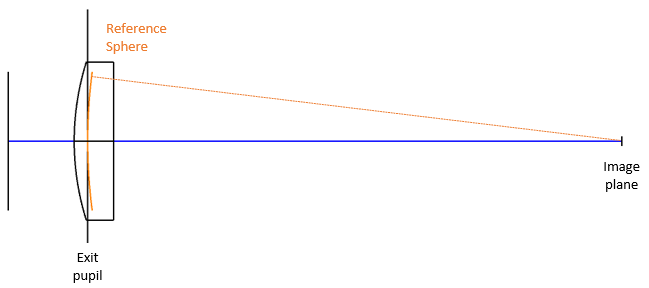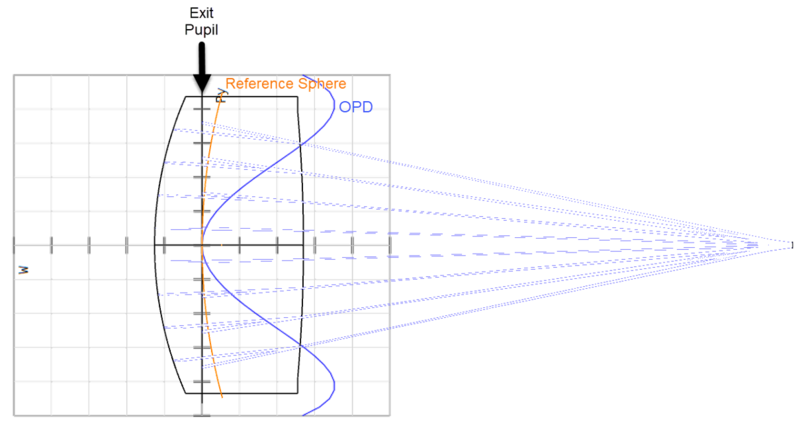Exit Pupil
OpticStudio by default uses the exit pupil as a reference for OPD computations. Therefore, when the OPD is computed for a given ray, the ray is traced through the optical system, all the way to the image surface, and then is traced backward to the "reference sphere" which lies in the exit pupil.
The figure below shows a singlet. The orange surface represents the reference sphere at the exit pupil.

The OPD at the Exit Pupil for a ray (Wave,Hx,Hy,Px,Py) can be simply written as:
OPDExit Pupil = OPDAbsolute + OPDCorrection
OPDAbsolute = OPTH(Surf=Object->Image Plane, Wave,Hx,Hy,0,0) - OPTH(Surf=Object ->Image Plane, Wave,Hx,Hy,Px,Py)
OPDCorrection = OPTH(Surf=Image Plane->Reference Sphere, Wave,Hx,Hy,0,0) - OPTH(Surf=Image Plane->Reference Sphere, Wave,Hx,Hy,Px,Py)
where OPTH is the Optical Path Length.
The OPD as measured back on this surface is the physically significant phase error important to diffraction computations, such as MTF, PSF, and encircled energy. This is shown in blue in the image below.

The additional path length due to the tracing of the ray backwards to the exit pupil, subtracted from the radius of the reference sphere, yields a slight adjustment of the OPD called the "correction term". This computation is correct and is the desired method for all cases of practical interest.
Next:


